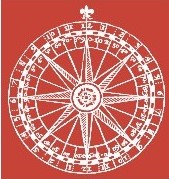The Child as “custode della memoria futura”: The Man Who Will Come and the Massacre of Marzabotto
By choosing Martina, an 8 year old peasant child, to be the focalizer of the Marzabotto massacre, Diritti makes possible a new historiography, shorn of the ideological appropriations to which this atrocity had lent itself over the years. In her…
Listado en Article | publicación de grupo Iter Community
Versión 1.0 - publicado en 12 Sep 2025
Licencia Creative Commons BY-NC 4.0
Descripción
By choosing Martina, an 8 year old peasant child, to be the focalizer of the Marzabotto massacre, Diritti makes possible a new historiography, shorn of the ideological appropriations to which this atrocity had lent itself over the years. In her determination to save her newborn brother, and her breaking of the fierce silence that she had maintained throughout the duration of the film, Martina signals her will to bear witness to the horror, and to endow her sibling, symbolically the New Man of postwar rebirth, with the power to redeem the course of events by guaranteeing, in Diritti’s words, “che in futuro una cosa del genere non avvenga più.”
Cita este trabajo
Los investigadores deben citar este trabajo de la siguiente manera:
Etiquetas
Notas
Original publication: Marcus, Millicent. "The Child as “custode della memoria futura”: The Man Who Will Come and the Massacre of Marzabotto." Quaderni d'italianistica 34 (2): 2014. 133-148. DOI: 10.33137/q.i..v34i2.21039. This material has been re-published in an unmodified form on the Canadian HSS Commons with the permission of Iter Canada / Quaderni d'italianistica. Copyright © the author(s). Their work is distributed by Quaderni d'italianistica under a Creative Commons Attribution-NonCommercial 4.0 International License. For details, see https://creativecommons.org/licenses/.
Vista previa de la publicación
Iter Community
This publication belongs to the Iter Community group.
When watching a publication, you will be notified when a new version is released.
